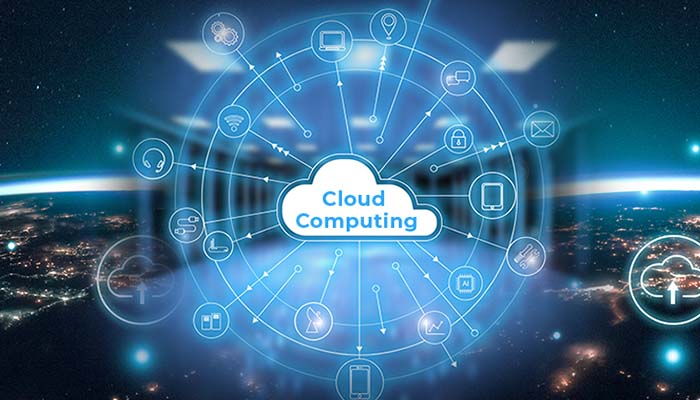- Posted On 10 Feb 2025

Cloud computing is a model of delivering computing services over the internet, where resources such as servers, storage, databases, software, and applications are provided as a service to users on-demand. With cloud computing, users can access these resources from anywhere, at any time, using any device with an internet connection.
How Cloud Computing Works
Cloud computing relies on a network of remote servers, which are accessed through the internet to store, manage, and process data. The front end, which is the user's device, accesses the cloud through an internet connection. The back end, which consists of the cloud provider's servers, databases, and applications, manages and stores the data.
Benefits of Cloud Computing
Cloud computing offers numerous benefits, including:
- Cost Savings: Cloud computing eliminates the need for upfront capital expenditures on hardware and software.
- Scalability: Cloud resources can be scaled up or down to match changing business needs.
- Flexibility: Cloud computing allows users to access resources from anywhere, at any time, using any device with an internet connection.
- Reliability: Cloud providers typically have multiple data centers and built-in redundancy, ensuring high uptime and reliability.
Types of Cloud Computing Services
Cloud computing services can be classified into several categories, including:
- Infrastructure as a Service (IaaS): Provides virtualized computing resources, such as servers, storage, and networking.
- Platform as a Service (PaaS): Provides a complete platform for developing, running, and managing applications, including tools, libraries, and infrastructure.
- Software as a Service (SaaS): Provides software applications over the internet, eliminating the need for local installation and maintenance.
- Function as a Service (FaaS): Provides a platform for running individual functions or tasks, without the need for server management.
Cloud Computing Deployment Models
Cloud computing deployment models can be classified into several categories, including:
- Public Cloud: A cloud provider delivers cloud services to multiple customers over the internet.
- Private Cloud: A cloud environment is provisioned and managed within an organization's premises.
- Hybrid Cloud: A combination of public and private cloud environments, allowing for flexibility and scalability.
- Community Cloud: A cloud environment is shared among multiple organizations with similar interests or goals.
Characteristics of Cloud Computing
Cloud computing has several key characteristics, including:
- On-Demand Self-Service: Users can provision and manage cloud resources without the need for IT intervention.
- Broad Network Access: Cloud resources can be accessed from anywhere, at any time, using any device with an internet connection.
- Resource Pooling: Cloud providers pool resources together to provide a multi-tenant environment.
- Rapid Elasticity: Cloud resources can be scaled up or down to match changing business needs.
- Measured Service: Cloud providers measure and charge for cloud resources based on usage.
Cloud Computing Security
Cloud computing security is a critical concern, with several key considerations, including:
- Data Security: Protecting data from unauthorized access, theft, or damage.
- Network Security: Protecting the network from unauthorized access, attacks, or disruptions.
- Identity and Access Management: Managing user identities and access to cloud resources.
- Compliance and Governance: Ensuring compliance with regulatory requirements and industry standards.
Cloud Computing Examples
Cloud computing has numerous examples, including:
- Google Docs: A cloud-based word processing and document management application.
- Microsoft 365: A cloud-based productivity suite, including word processing, spreadsheet, and presentation applications.
- AWS Lambda: A cloud-based serverless computing platform.
- Dropbox: A cloud-based file storage and sharing application.
Cloud Computing Use Cases
Cloud computing has numerous use cases, including:
- Big Data Analytics: Processing and analyzing large datasets in the cloud.
- Machine Learning: Training and deploying machine learning models in the cloud.
- IoT: Processing and analyzing IoT data in the cloud.
- Disaster Recovery: Using the cloud for disaster recovery and business continuity.
Future of Cloud Computing
The future of cloud computing is promising, with several emerging trends and technologies, including:
- Artificial Intelligence: Integrating AI and machine learning


